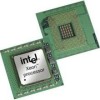Intel BX80605X3430 Data Sheet - Page 66
Reserved or Unused Signals, Signal Groups
 |
UPC - 735858210331
View all Intel BX80605X3430 manuals
Add to My Manuals
Save this manual to your list of manuals |
Page 66 highlights
Electrical Specifications 7.5 7.6 Reserved or Unused Signals The following are the general types of reserved (RSVD) signals and connection guidelines: • RSVD - these signals should not be connected • RSVD_TP - these signals should be routed to a test point • RSVD_NCTF - these signals are non-critical to function and may be left unconnected Arbitrary connection of these signals to VCC, VTT, VDDQ, VCCPLL, VSS, or to any other signal (including each other) may result in component malfunction or incompatibility with future processors. See Chapter 8 for a land listing of the processor and the location of all reserved signals. For reliable operation, always connect unused inputs or bi-directional signals to an appropriate signal level. Unused active high inputs should be connected through a resistor to ground (VSS). Unused outputs may be left unconnected; however, this may interfere with some Test Access Port (TAP) functions, complicate debug probing, and prevent boundary scan testing. A resistor must be used when tying bi-directional signals to power or ground. When tying any signal to power or ground, a resistor will also allow for system testability. For details, see Table 7-9. Signal Groups Signals are grouped by buffer type and similar characteristics as listed in Table 7-3. The buffer type indicates which signaling technology and specifications apply to the signals. All the differential signals, and selected DDR3 and Control Sideband signals, have OnDie Termination (ODT) resistors. There are some signals that do not have ODT and need to be terminated on the board. 66 Datasheet, Volume 1















